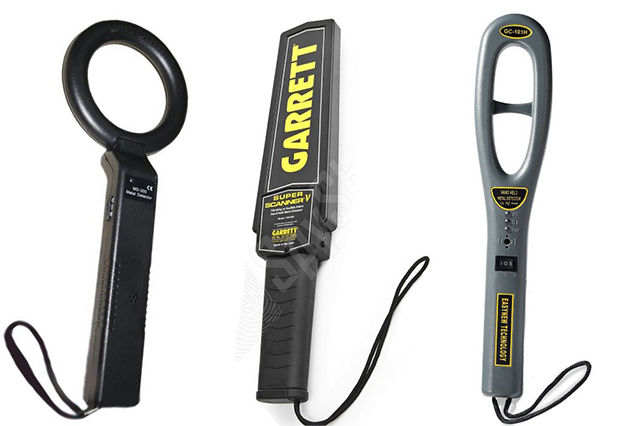Hand Held Metal Detector
Hand Held Metal Detector
A handheld metal detector (HHMD) is a portable electronic device designed to detect the presence of metal objects on or near the surface of a person or object. Handheld metal detectors are commonly used in various applications, including security screenings, law enforcement, archaeology, and treasure hunting. Here are some key features and considerations related to handheld metal detectors:

Operating Principle : Handheld metal detectors typically use electromagnetic induction or pulse induction technology. These technologies generate a magnetic field, and when a metal object is introduced into this field, it disrupts the electromagnetic waves, triggering an alert.
Sensitivity Adjustment : Many handheld metal detectors allow for sensitivity adjustment. This feature enables the user to set the detector to be more or less sensitive based on the specific needs of the screening process. Lower sensitivity may reduce false alarms, while higher sensitivity can help detect smaller metal objects.
Alert Indicators : When a metal object is detected, handheld metal detectors provide alerts through various means. Common alert indicators include audible alarms (beeps or tones), visual indicators (LED lights), and sometimes vibration or a combination of these features.
Search Coil : The search coil is the part of the handheld metal detector that is moved over or near the area being examined. It emits the electromagnetic field and detects disruptions caused by the presence of metal.
Battery Operation : Handheld metal detectors are typically powered by batteries, usually rechargeable or disposable. The battery life varies depending on the usage and the specific model.
Ergonomic Design : The design of handheld metal detectors is often ergonomic, making them comfortable to hold and easy to use for extended periods. Some models have a pistol grip, while others have a wand-like design.
Durability : Handheld metal detectors are designed to withstand the rigors of regular use, and many models are built to be durable and resistant to environmental conditions.
Applications : Security Screenings: Handheld metal detectors are commonly used for security checks at airports, public events, schools, and other secure locations to detect concealed weapons or metal objects.
Law Enforcement : Law enforcement agencies use handheld metal detectors for personal searches during routine policing or in specific situations.
Archaeology : In archaeological excavations, handheld metal detectors are used to locate metal artifacts or objects buried underground.
Treasure Hunting : Enthusiasts use handheld metal detectors for treasure hunting and metal detecting as a hobby.
Legal and Regulatory Compliance : Depending on the application, there may be legal and regulatory requirements regarding the use of handheld metal detectors, especially in security settings. Compliance with these regulations is essential.
Handheld metal detectors are versatile tools that provide a quick and non-intrusive means of detecting metal objects. They are widely used in various industries to enhance security and facilitate tasks that involve locating metal items.
